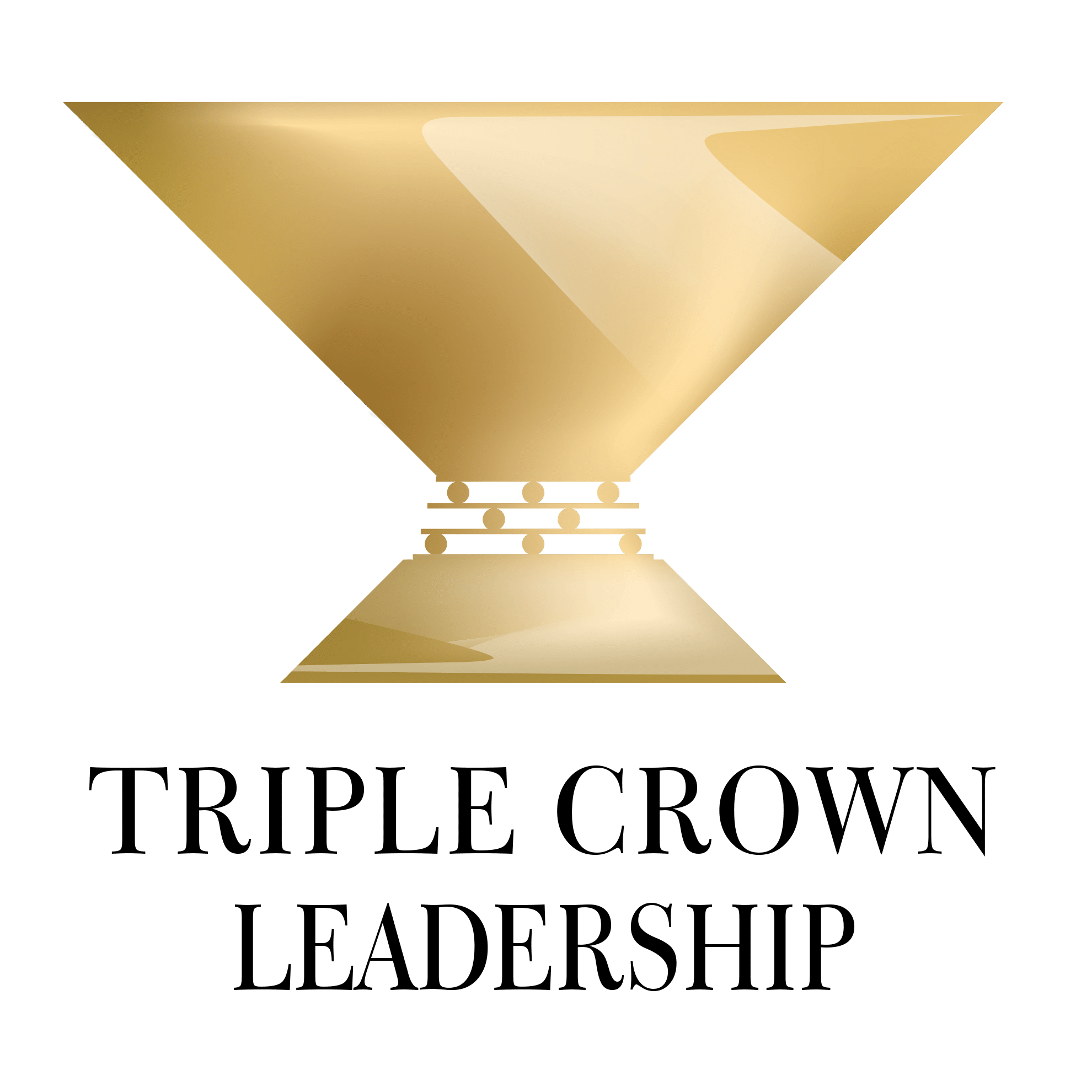
Getting Results with Steel or Velvet—A Critical Leadership Practice
Triple crown leaders—those seeking to build organizations that are excellent, ethical, and enduring—go beyond their natural leadership style, flexing between the hard edge of steel and the soft edge of velvet, depending on the situation and the people involved. (See our related article, “Steel and Velvet Leadership.”) They acknowledge their varying approaches referencing the organization’s shared values. This article dives deeper into getting results for your organization using steel and velvet. Getting Results with Velvet Leadership In velvet mode, triple crown leaders are coaches of their workers. They don’t micromanage their people. Instead, they leave their people free to

Leading People with Steel or Velvet–A Critical Leadership Practice
Triple crown leaders—those who aspire to build excellent, ethical, and enduring organizations—have learned to go beyond their natural leadership style, flexing between what we call “steel and velvet,” the hard and soft edges of leadership, depending on the situation and the people involved. Steel leadership demands excellent results, insists on ethical practices, and resists the allure of short-term thinking. Velvet leadership patiently builds organizational character, encouraging collaboration and using persuasion, not position power. Triple crown leaders invoke steel when necessary but employ velvet leadership much more often. This article dives deeper into the nuances of leading people with steel and

Communicating with Steel or Velvet–A Critical Leadership Practice
Article Summary: Many leaders don’t tailor their communication style to the situation. Effective leaders flex between steel and velvet (hard- and soft-edge) communication, depending on the situation and the people involved. +++ Of the five advanced leadership practices for building an organization that’s excellent, ethical, and enduring (from our book, Triple Crown Leadership), “steel and velvet” seems to be the most intriguing to many people. Steel and Velvet Triple crown leaders have learned to invoke the hard edge of leadership (steel) that demands excellent results, insists on ethical practices, and resists the allure of short-term thinking. These leaders have also

Giving and Receiving Compliments–An Important Leadership Practice
Article Summary: Many people are poor at giving and receiving compliments. That’s a shame. High-performance teams are superb at this skill, and praise can make a big difference in motivation. +++ What’s Wrong with This Exchange? Sam: “Amy, you did a great job on that rush project last week.” Amy (looking away and down): “It was no big deal.” Amy virtually dismissed Sam’s compliment. Instead, she might have smiled, looked him in his eyes, and said, “Thank you so much. I really appreciate that.” Or, if multiple people were involved, she might have said, “Thank you so much. We

Reading Body Language—A Neglected Leadership Skill
Article Summary: Reading body language is an underutilized skill for most of us. Body language and tone of voice are important communication conduits. +++ There’s a leadership capability we all have that is seriously underutilized—observing and reading body language. By reading what other people are communicating through their body language, we can significantly upgrade our leadership skills. Be an Observer Bob realized the importance of this while conducting a leadership workshop. An exercise involved about ten volunteers who agreed to be put into a pressure-filled situation. They first read a short scenario where each was given a role to

Why Do You Want to Lead?
Article Summary: Knowing why you want to lead is essential. If your motive to lead is selfish, you’ll fail. Your ego is a leadership toxin. +++ Why do you want to lead? It’s important to know that—important to your future and to those you lead. Leading Is a Choice You may get thrust into a position of authority when a vacuum exists. Most times, though, leadership is a choice you make. If offered, you can agree to step into a position of authority. You can choose. You can also choose to lead without a title or formal authority. Knowing

How to Create a Shared Purpose, Values, and Vision
Article Summary: Many people these days are cynical about an organization’s purpose, values, and vision because they’re platitudes. But great leaders collaboratively elicit them from the team and then weave them into the fabric of the organization. +++ Whether you’re the CEO, a department manager, or a small business owner, we encourage you to create a purpose, values, and vision statement for your organization. We call them your “colors.” This is one of the critical leadership practices to create a high-performance organization. The Importance of Colors In our book, Triple Crown Leadership, we use the metaphor of thoroughbred horseracing.

What to Do If You Work for a Toxic Boss?
Article Summary: Many people work for a toxic boss. It can be incredibly frustrating. What to do about it? Here are five steps you can take. +++ So you’ve got a toxic boss and you don’t feel like you’re in a position to change things in your organization. What to do? There are five steps you can take. But first, determine if your whole organization is toxic. If it is toxic, then you MUST leave. (Go directly to step 5 below.) To stay would be shortsighted. “If you lie down with dogs, you will get up with fleas.” -16th century

How to Find a Great Organization to Work For
Article Summary: Frequently, we hear from job seekers that it’s hard to find good organizations. How to find a great place to work? A step-by-step guide. +++ We’ve written extensively about what we call “triple crown organizations,” ones that are excellent, ethical, and enduring. These organizations are great places to work. Though they aren’t the norm today, we believe they’re the wave of the future. If you get the opportunity to work in such an organization and experience the pride, joy, sense of purpose, and relationships with colleagues, you’ll never want to go back to a less fulfilling place. Conversely,

Is Your Organization Aligned?
Article Summary: Most organizations aren’t aligned, reducing performance and causing frustration and dysfunction. Complete our Alignment Scorecard to gauge your organization’s alignment. +++ Most organizations aren’t aligned. As a result, workers are frustrated and the organization underperforms, sometimes badly. Signs of Misalignment When organizations aren’t aligned: People lack a clear and inspiring sense of why the organization exists and where it’s going. There isn’t enough collaboration or trust. Cross-functional cooperation is lacking. Clear goals are missing. Workers don’t understand how their work fits into the overall efforts to achieve the collective vision. People aren’t actively engaged. The organization doesn’t

Six Words to Fix Your Accountability Problems
Article Summary: Many organizations struggle with accountability. We discovered six words you can use to fix your accountability problems. +++ Are you frustrated by accountability problems? Are people passing the buck, denying responsibility? Do meetings go on and on without coming to timely and definitive conclusions? We’ve been there and know how demoralizing it can be. We discovered six words you can use to turn the tide. Using these six words at the close of every meeting will fix your accountability problems and upgrade your team’s performance. The Six Magic Words What are those six magic words? At the

Good Leaders Are Good Storytellers
Article Summary: Many leaders struggle with effective communication. Here we address why storytelling is so powerful and how leaders can get better at it. +++ Bob recalls a defining moment in the turnaround of a large public company where he was the new CEO. During the senior staff meetings held every Saturday morning while the company was in crisis, each executive reported progress on critical milestones. One vice president, let’s call him Phil, failed to deliver on an important assignment week after week. After a while, Bob had enough and grilled him, shouting at Phil that his excuses were unacceptable.

How to Align Your Organization for Peak Performance
Article Summary: Most organizations aren’t aligned. This reduces performance dramatically and often causes frustration and dysfunction. Here we show leaders how to align their organization or team. We include an Alignment Scorecard to assess your current levels of alignment. +++ In our experience, most organizations aren’t aligned. If they’re not aligned, they’re underperforming. And perhaps dysfunctional. Alignment is a collaborative process providing cohesion, clarity, and focus to get everyone moving in the same direction. To assess the extent to which your organization is aligned, use our Alignment Scorecard. What Are Aligned Organizations? In aligned organizations: People have a clear

How to Come Back Even Stronger from a Crisis
Article Summary: Many leaders face a crisis that threatens their organization yet find themselves and their team woefully unprepared to handle it well. In this article, five-time CEO Bob Vanourek outlines ten practices for leading a crisis so that you can emerge even stronger than before. by Bob Vanourek “The signature of the truly great versus the merely successful is not the absence of difficulty, but the ability to come back from setbacks, even cataclysmic catastrophes, stronger than before.” -Jim Collins Some of you will encounter a crisis that will threaten your organization’s very survival. Jim Collins is right. I’ll

The Power of Small Groups—And How to Run Them
There is immense power in small groups. But not just any small group. We mean small groups that meet periodically to support each other at the deepest levels in a safe place of confidentiality, trust, and respect. We’re not talking about social clubs, book clubs, Bible studies, 12-step meetings, mastermind groups, circles of trust, clearness committees, elder councils, or personal boards of directors. No doubt, these are valuable and can help build community and relationships. The small groups we mean may use different names, but they share critical characteristics. Here are some examples: “True North Groups” (Bill George and

